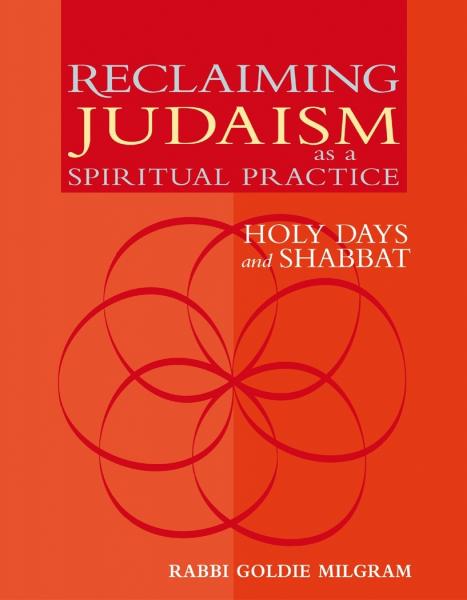
Note: This article is also attached in a pdf file in Hebrew, as it appeared in Israel.
Purim prepares every child for quick turns in reality, teaching very early that you cannot rely on government to be concerned for your welfare. Better to realize that cruel qualities are present in every human and too easily unleashed into society. The price of true freedom is indeed eternal vigilance, and Purim is a reminder that you, the individual, are always on guard duty.
It is our practice to cross-dress on Purim - find the other in yourself. Dress up and try on Esther’s role, be Haman the villain, the king and the assassin. The Scroll of Esther invites you onto the stage of history. For what cause would you risk giving up your privilege, position, and lifestyle? For what would you risk your life? For what principles or causes ought a person to risk life? Is the King of unawareness and apathy, Ahashverosh there inside too? Better to discover these qualities in play than to act them out and destroy what it means to be a Jew.
Intermarried like Esther? Here's another Purim Question:
If you are not Jewish, and you are in a relationship with a Jewish person, how can you support your partner in exploring and securing the treasures and security of his/her people? How will you help this precious legacy live through your children, your students, your art, your work?
Where is G*d in the Purim Story?
In Megillat Esther G*d is never mentioned. This might be further documentation of the Jewish people's spiritual evolution away from the G*d-as-parent model and their recognition that events may have Mystery behind them and yet require human involvement if we are going to be of service in shaping creation. This absence of G*d-by-name in the story also seems to facilitate the permission participants feel to give full expression to the playfulness of the holiday.
G*d is never overtly mentioned in Megillat Esther. Maybe every face is the mask of G*d in the story called life.
Our sages find G*d in Megillat Esther by pointing to Deuteronomy 31:18. Listen to the sound of the Hebrew words: Ah-noe-hi ha-stehr ahsteer, "I will hide my face on that day." Can you hear how ahsteer sounds like Esther? So, on Purim, G*d is also wearing a mask, that of Esther. Every day, you, a stranger, your teacher, a partner, your neighbor, your enemy, each has the potential to realize s/he is in the Esther position—able to unmask and bring a mitzvah-centered consciousness into difficult circumstances. The choice belongs to the individual; the consequences belong to all.
Story Synopsis
In the Purim story, the orphan who became a queen by winning a beauty contest learns the evil advisor to the king has obtain a writ to kill all the Jews. Queen Esther develops a plan to save her people that involves appearing before the king to invite him to a party. Since the Queen is not allowed in the king’s presence without prior invitation, she will be taking her life in her hands. Esther prays and fasts before she acts. She prepares a feast to which she also invites Haman. Haman arrives first and launches himself at her with the expectation of a sexual encounter. The king enters and catches Haman doing this to his beloved young Queen. Esther uses this moment to reveal her Jewishness while denouncing Haman’s plot, which would have required her to die along with all the other Jews in the kingdom. The King turns against Haman and adopts a plan presented by Esther to save her people, giving us the right to defend ourselves in particular and elevating Mordecai to Haman's former position.
Provocative Purim Questions
Exercising power, overt and covert, is the name of the game in Megillat Esther. If one reads the story from a feminist perspective, one is inclined to applaud Esther’s predecessor, Queen Vashti, who refused to appear "in all her beauty" before the King’s courtiers. The sages interpreted this as a refusal to appear naked. On the other hand, it is a titillating scene when Esther uses her gender, sexuality, and beauty to topple Haman. You’ll have to read the ganseh megillah yourself to learn about the scheme she doesn’t employ that had been proposed by her cousin Mordehai. It is, after all, her own life at risk. She knows the ways of the palace and her own talents far better than he. Is what Esther does ethical? The ethical dilemmas of Purim make for important study and encourage another Jewish practice, answering a question with another question.
Often we assume that the messages of the holidays are obvious. But moving from a message to true spiritual development requires a supportive context, that of conscious friendships, families, and communities. To benefit from Purim, it helps to begin by asking yourself questions, such as:
How can you bring more joy, humor, and release into your congregation’s Purim? When Haman’s plot is foiled and Mordehai is appointed prime minister in his place, Megillat Esther says: “For the Jews there was orah, ‘light,’ simchah, ‘happiness,’ sasson, ‘joy’ and vee-kar, ‘cherishing.’” This verse is quoted in the Havdallah ceremony that ends Shabbat, adding the sentiment: keyn tee-h’yeh lanu, “So may it be for us.” We are a people that has long appreciated the healing value of humor. For example, there is the long tradition of the Purim Kiddush, which involves substituting bits of other prayers as you chant the usual festival prayer over the wine, as if you don't realize that's what you are doing. Go ahead. Experiment! Be playful!

Learn more about Jewish holy days
in Reclaiming Judaism as a Spiritual Practice;
Holy Days and Shabbat by
Rabbi Goldie Milgram